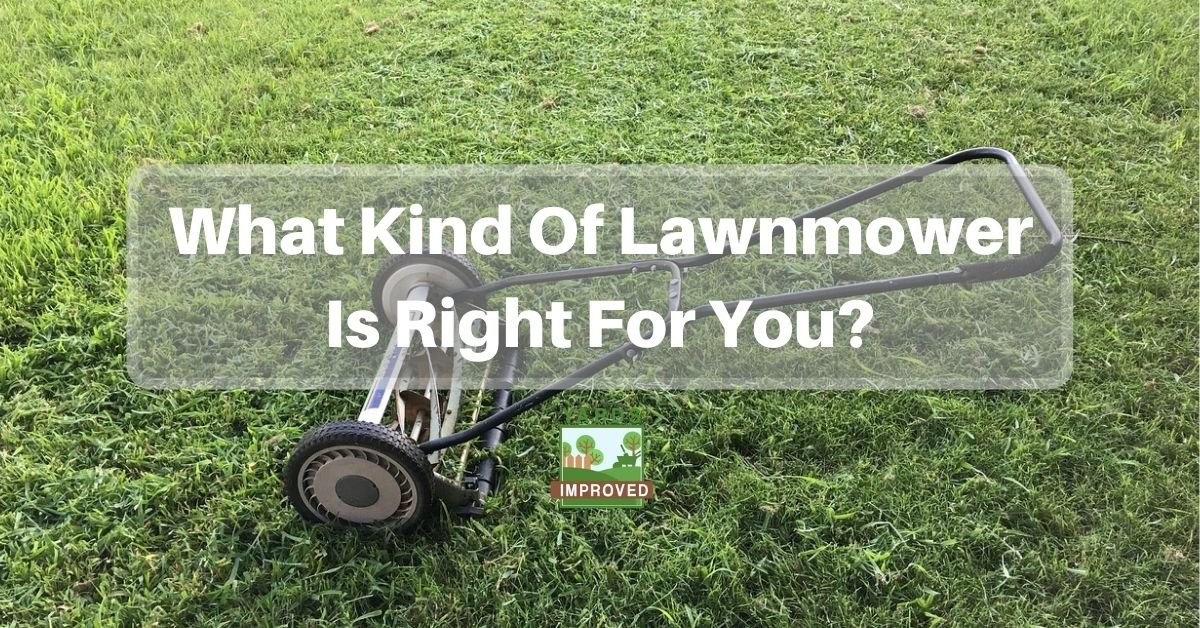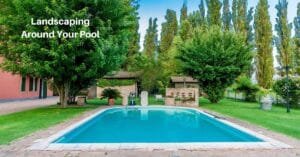Mowing the lawn can be, quite bluntly, a drag. It can take valuable relaxation time out of a Saturday afternoon. It can lead to excessive sneezing. And it means a lot of time under the hot sun sweating, getting grass cuttings stuck to yourself, and maybe even suffering through small sticks and stones being kicked back at you. Still, it’s got to be done. So it’s important to choose the right mower to get the job down.
Lawnmowers come in all shapes and sizes. From push mowers with no motor right through large ride-on beasts. A lot goes into choosing one that meets the needs of your own yard, and bigger isn’t necessarily better. You have to consider the size of your lawn, of course, but also the slope, shape, and any obstacles you’ll have to work around. So what should you look for when it’s time to buy?
Evaluating Your Lawn
The most important thing to consider when choosing your lawnmower is, of course, your lawn. This can make all the difference in whether you need a gas or electric mower, a push mower, one that powers itself, or a ride-on model.
Get some tips on how to mow your lawn to keep it healthy and full!
Lawn Size
First, you’ll want to consider the size of your yard. Obviously, a smaller mower will take more time to do the job than a large one. But if you only have a small yard, how much time will you really save – and where would you store a larger mower, anyway?
With a larger lawn, you can always use any size mower. But you’ll be spending more time with it the more grass you have to cut.
Lawn Slope
Size isn’t the only factor to take into account, though. That would be too simple!
On nice, even ground, you can use any mower. But once you have more than even a gentle slope, you have to factor this into your decision.
Too steep a slope on parts of your lawn could rule out ride-on mowers completely. They could tip over and put you at risk of life and limb. But a purely manual push mower might get too heavy to push up and down. A self-propelled mower could be ideal if your lawn is somewhat steep.
Terrain
Slope could be considered part of the terrain, but it’s clearly not the only part. And that makes it another important factor to consider. If your ground is irregular, you run a greater risk of banging the blade against roots, rocks, or the ground itself as your mower tries to navigate the unevenness.
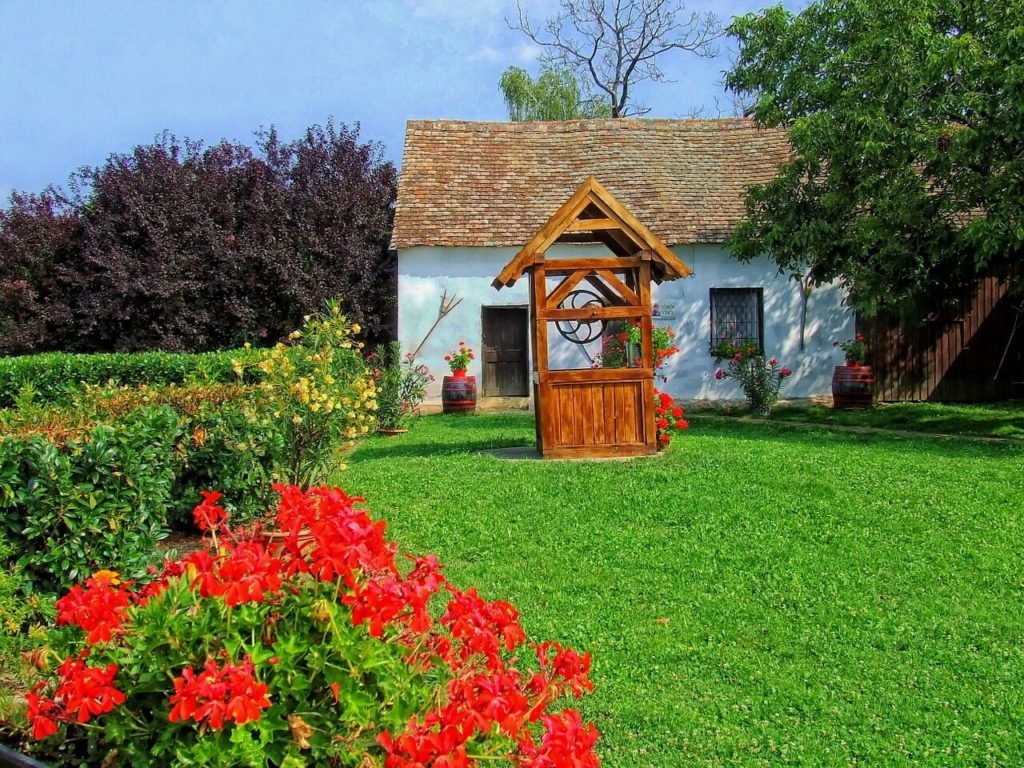
In this case, you’ll want something with rear-wheels or all-wheel drive to get you from getting stuck on those tough spots.
Obstacles
Finally, you should consider what obstacles there are across your lawn. Do you have trees or large rocks that make up part of your landscaping? How about an above-ground pool, a garden, or other areas that you’ll have to carefully negotiate?
Any such obstructions can make it important to have a mower that you can easily maneuver around them. Higher rear wheels can make it easy to steer around these hazards. You might have to do more edging around them later, but you won’t be able to get too close with a mower.
What To Look For
What you need in a mower will vary based on the factors above and your own particular taste.
Blade Size
One of the key factors is the size of your lawnmower’s blade. A longer blade means you cut more at once. Basically, the bigger the blade, the faster you can cut. However, that also means your mower is less able to get into corners or handle tight spaces. That could be fine if your yard is wide open and perfectly squared off. But if it’s a smaller space, you might find it awkward to make turns or find you have to go back later with trimmers to finish the job.
A new blade should be sharp from the get-go. In future years, you should sharpen it before the season starts.
Adjustable Height
Depending on the time of year, you will want to cut your lawn to different heights. This is to help it thrive throughout the seasons. A lawnmower with adjustable-height wheels makes this an easy thing to do.
Adjustable wheels also help when you’re dealing with uneven parts of your lawn. A higher setting can help make it easier to move around uneven ground.
Ease of Cleaning
Once you’re done mowing, you’ll want to clean out the grass from underneath. Some mowers make this easier to do than others. Easy access to the underside of the mower makes this a quick and easy job. But if you have to turn the mower over, you end up spending more energy and risk having gas leak out.
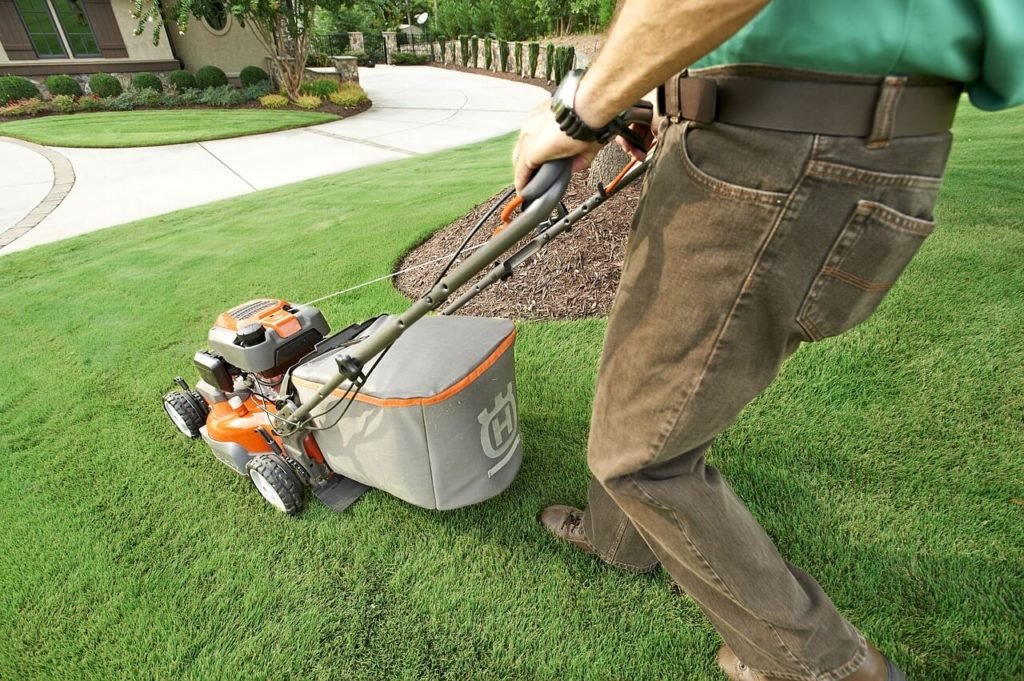
Grass Bag
Many mowers include or allow you to add a bag that catches the grass as it’s cut. This is a huge timesaver.
There may be times when you’re happy to let the grass lie where it falls so that it can help fertilize or insulate the lawn. However, that varies according to the time of year. Most of the time, you’ll want to gather the grass up and add it to your compost heap. Having a bag attachment definitely saves you from raking later on!
Mulcher Adjustment
Another great feature is being able to set your mower to turn your cuttings to mulch. As it picks up both grass and fallen leaves, it cuts them more finely than a regular mowing. This helps make it even more suitable to leave behind without raking up.
Types of Lawn Mower and What They’re Best For
There are all kinds of lawnmower and each serves its purpose. Let’s look a bit at which each general type can do for you.
Reel Mower
Yes, we’ll include even the old-fashioned reel mower here! And it’s great for a number of things: getting more exercise, being environmentally friendly, and being cost-effective among them!
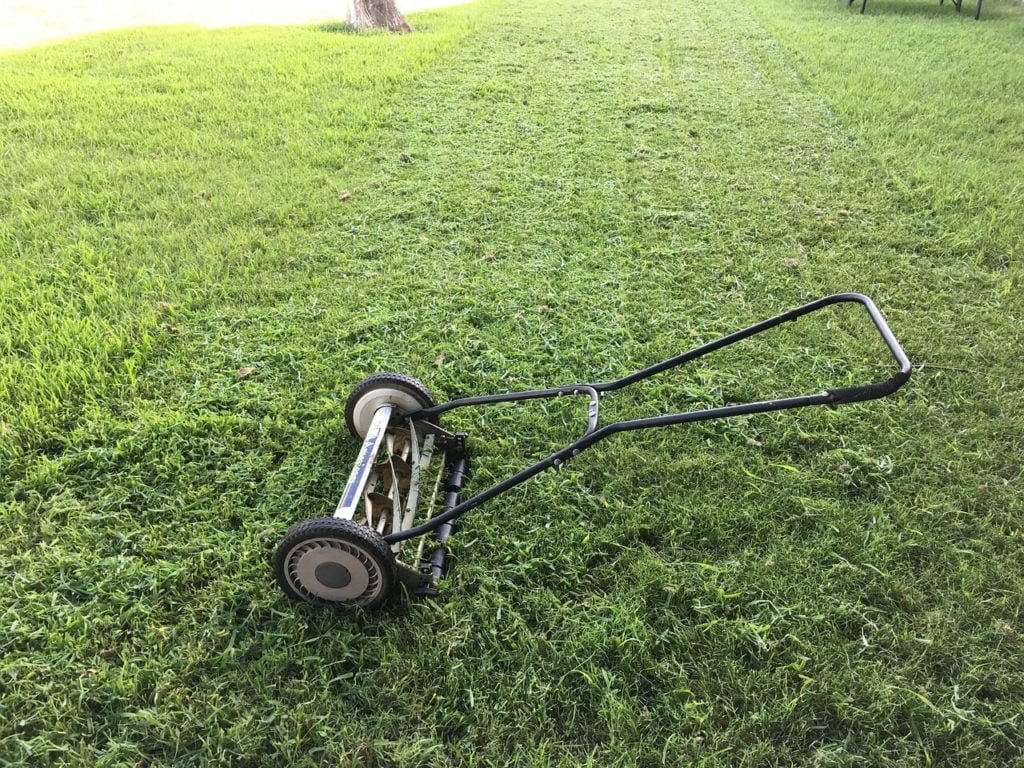
Actually, a reel mower can provide a good trim to your lawn. It does take effort, but if you just have a small space to worry about, it can be a great option. It doesn’t take up much storage space, although it can weigh a bit more than you’d like to lift. And of course, it’s the “greenest” option on the list.
Find out which reel mowers are best
Electric Corded Mower
For a relatively small yard, an electric corded mower works well. You just plug it in and go. These mowers are generally smaller and have less power than their gas-powered counterparts. But they’re limited in how far they can go from the nearest electric outlet.
Still, they’re quite handy for an average yard. We’d recommend not using them on over half an acre of flat land, though.
Battery-Powered Mower
If you need a little more freedom than a corded mower, a battery-powered mower will let you go farther. But you can’t run it for as long.
A battery-powered mower lets you avoid the hassle of having a long cord and it’s easy to take with you if you have a section of the yard that’s not near a source of current. But you still have to remember to charge it when not in use. And most batteries will run down in about ⅓ of an acre.
Gas Push Mower
A gas mower is another good choice for lawns under half an acre. They work best on even surfaces since you’re provided the force to move them and because the wheels are generally even.
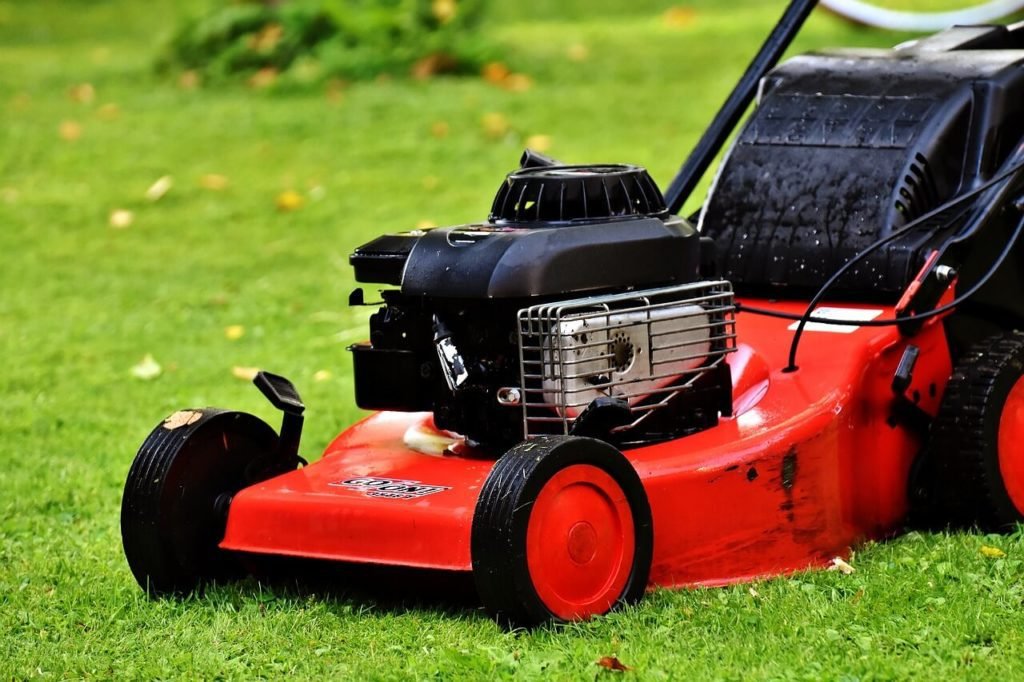
A full tank typically holds between ½ and 1 gallon.
The mower will provide a good cut and a lot of freedom.
In the long run, an electric mower usually comes out cheaper to run. Of course, it can depend on the particulars of your lawn and the cost of gasoline, but with the trends in gas prices the last few years, electric comes out ahead.
Self-Propelled Mower
A self-propelled mower takes a lot of the burden off you and allows the mower to do more of the work itself. There are both front-wheel drive and rear-wheel drive models.
These are especially good when you’re dealing with a larger lawn. It can also be helpful if dealing with slopes since you won’t be the only force helping it up.
Rear-wheel drive models, like their automobile counterparts, are designed to help handle rougher terrain.
Check out the top-rated self-propelled lawn mowers
Ride-on Mowers
When you have a large lawn or don’t feel comfortable walking behind a mower, a ride-on mower is the way to go. These vehicles help you cover more ground, more quickly.

Of course, they’ll also use more gas after requiring a steep initial outlay of cash. But it can be worth it when you’re dealing with more than a small lawn. They’ll save you a huge amount of time and allow you to be more relaxed while mowing.
There are also a lot more attachments availments for ride-on mowers, such as devices that will dethatch and aerate your lawn.
Check our picks for the best ride-on mowers
Robot Mowers
This probably would have been a great concept for a “B” horror film in the 1980s, but robot lawnmowers are real enough today. Even though they’re only now catching on and still cost a good bit, these tools do the job while letting you go about your other tasks.
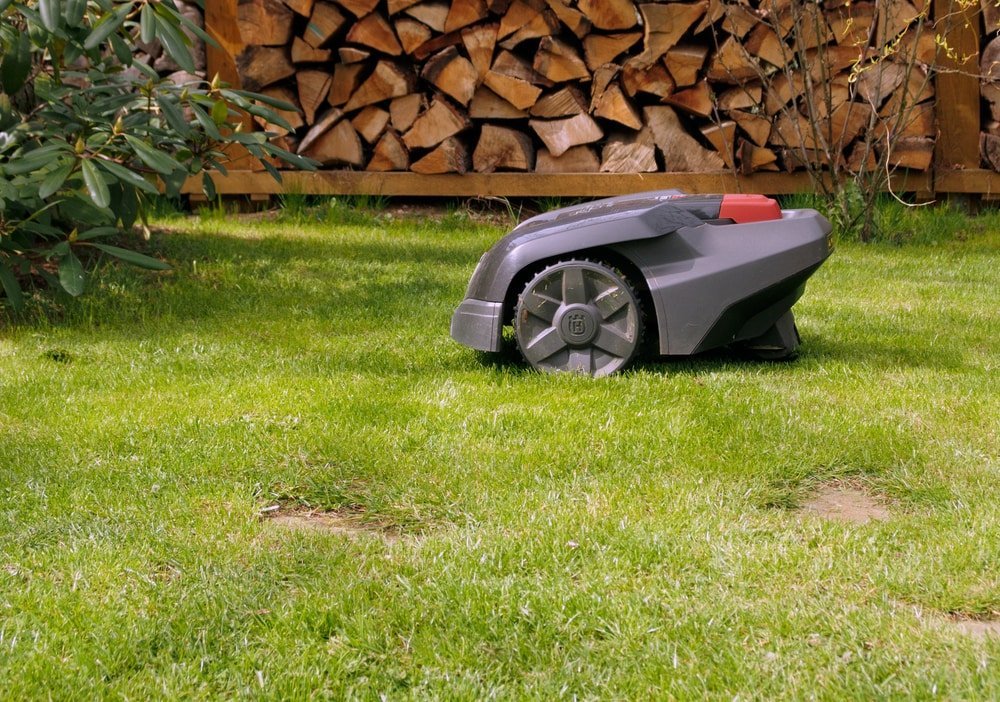
Like their cousins the robotic vacuum cleaners, these mowers learn what your lawn “looks” like so they can navigate around without bumping into things or straying from their designated area.
Right now they have a limited coverage area but the technology continues to develop. We could possibly have a much more relaxing weekend in the near future!
Conclusion
Choosing a lawn mower requires looking at a number of factors related to not only the size of your lawn but also how it’s laid out and how even the ground is. There are a lot of choices in for any type of lawn, and those choices will affect both the initial cost and ongoing operating costs of your mower. Look carefully at all your choices and make the one that suits your own lawn the best!

